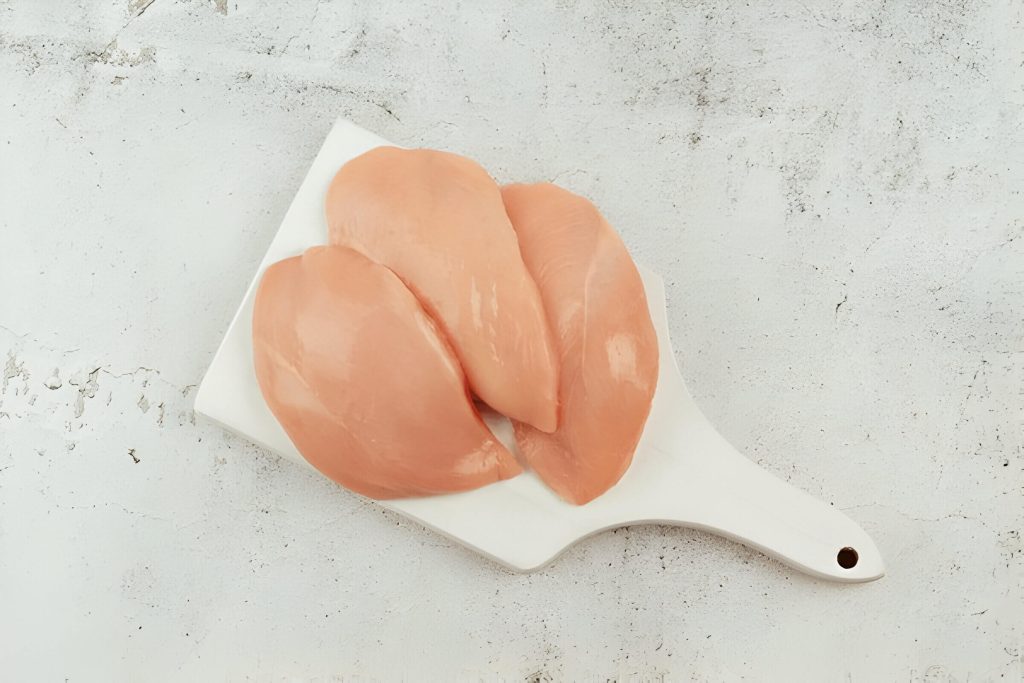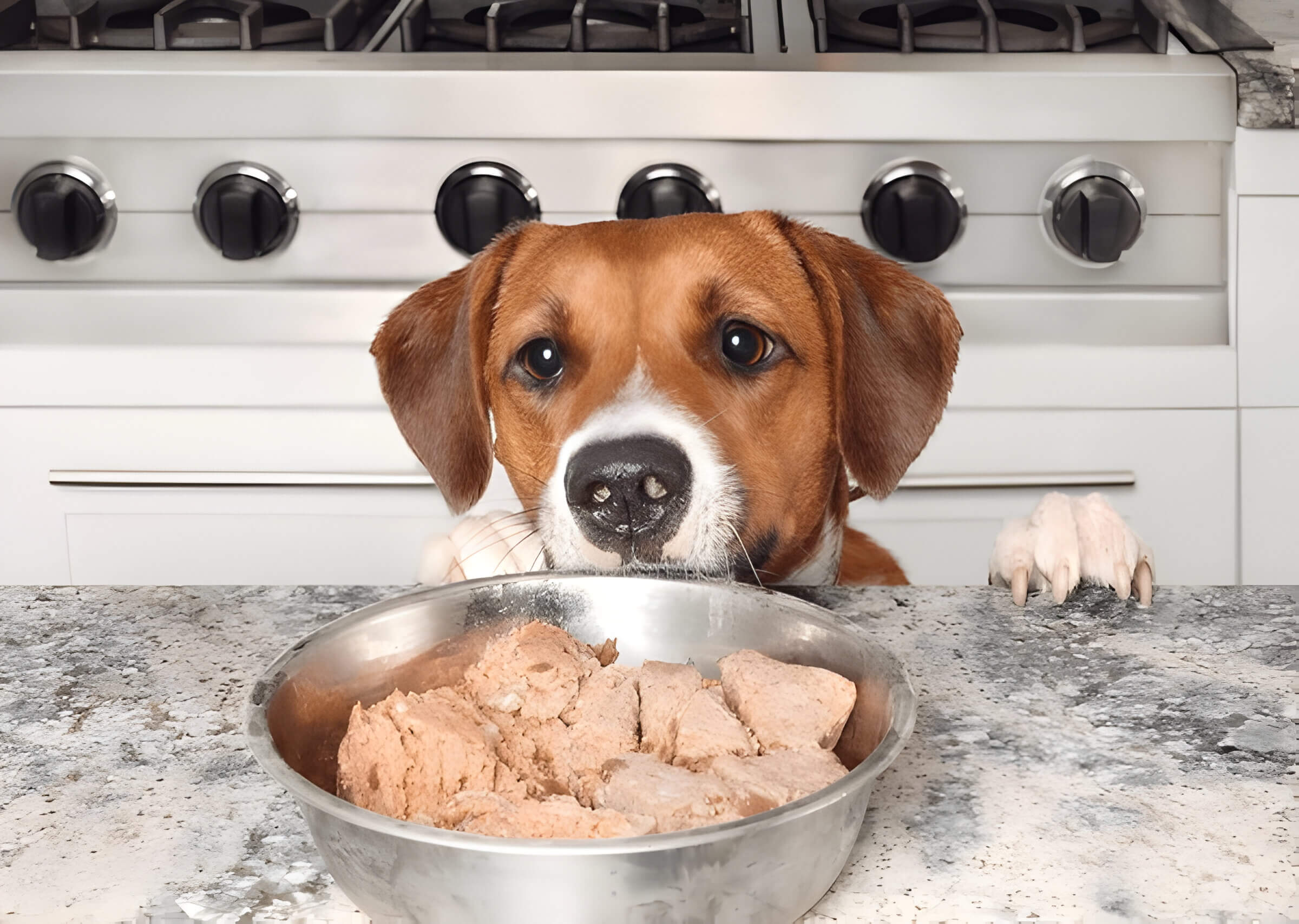As raw diets for dogs gain popularity, many pet owners wonder about the safety and benefits of feeding raw chicken. This guide covers the nutritional advantages and potential health risks, with insights from veterinary experts and tips on safe handling. Explore the pros, cons, expert opinions, and alternative dietary choices to make an informed decision for your dog’s nutrition.
Nutritional Benefits of Feeding Your Dog Raw Chicken
Feeding your dog raw chicken can offer a variety of nutritional benefits that contribute to overall canine health. One of the primary advantages is the high protein content found in raw chicken. Protein is essential for muscle development, repair, and maintaining a healthy coat and skin. Raw chicken also contains important nutrients such as vitamins B6 and B12, niacin, phosphorus, and selenium, all of which play crucial roles in supporting your dog’s metabolic functions and immune system.
The benefits of raw meat for dogs extend beyond just protein. Raw chicken provides natural sources of fats that are vital for energy production and nutrient absorption. Additionally, the bones in raw chicken can be beneficial for dental health by helping to keep teeth clean and gums strong through natural chewing processes.
Incorporating raw chicken into your dog’s diet can also enhance their overall digestive health. The enzymes present in raw meat aid in digestion and promote better nutrient absorption compared to some processed dog foods. However, it’s important to ensure that the raw chicken is fresh and handled properly to avoid any potential risks associated with bacterial contamination.
Overall, integrating raw chicken into your dog’s diet can significantly improve their nutrition by providing essential proteins, vitamins, minerals, and healthy fats necessary for optimal canine nutrition. Always consult with a veterinarian before making any significant changes to your pet’s diet to ensure it meets their specific needs.
Potential Risks and Safety Concerns of Feeding Dogs Raw Chicken

Feeding dogs raw chicken has become a trend among some pet owners, but it’s important to be aware of the potential risks and safety concerns associated with this practice. One of the primary dangers is bacterial infections from raw chicken. Raw meat can harbor harmful bacteria such as Salmonella and Campylobacter, which can lead to serious health issues in dogs.
The risks of salmonella in dogs are particularly concerning. Ingesting contaminated raw chicken can result in gastrointestinal distress, including symptoms like vomiting, diarrhea, and lethargy. In severe cases, it may even lead to more serious conditions such as septicemia or systemic infections that require immediate veterinary attention.
Safety concerns with raw meat for pets extend beyond just bacterial infections. Handling and storing raw chicken improperly can increase the likelihood of contamination not only for your pet but also for household surfaces and humans in the home. It’s crucial to practice strict hygiene measures if you choose to feed your dog a raw diet.
While feeding dogs raw chicken might seem like a natural choice, it’s essential to weigh these potential risks carefully. Consulting with a veterinarian before making any significant changes to your pet’s diet is always recommended to ensure their health and safety.
Tips and Guidelines to Safely Feed Your Dog Raw Chicken
Feeding your dog raw chicken can be a nutritious option, but it’s crucial to follow specific guidelines to ensure safety and hygiene. Proper handling of raw meat for dogs is essential to prevent any potential health risks for both your pet and household members.
Firstly, always source high-quality raw chicken from reputable suppliers. Freshness is key, so check the expiration date and avoid any meat that looks discolored or has an off smell. When preparing raw chicken for pets, use separate utensils and cutting boards dedicated solely to their food. This minimizes the risk of cross-contamination with human food.
Hygiene tips for feeding dogs raw food include thoroughly washing your hands before and after handling the meat. Clean all surfaces that come into contact with the raw chicken with hot, soapy water or a disinfectant. Store any unused portions in airtight containers in the refrigerator or freezer to maintain freshness.
By following these tips on safe handling of raw meat for dogs, you can confidently provide a balanced diet while keeping your pet healthy and happy.
What Do Experts Say About Dogs Eating Raw Chicken?
When it comes to feeding dogs raw chicken, veterinary opinions are notably varied. Many experts in the field of dog nutrition express concerns about the potential risks associated with raw diets. One of the primary issues highlighted by vets is the risk of bacterial contamination, such as Salmonella and E. coli, which can pose significant health threats not only to dogs but also to their owners.
On the other hand, some veterinarians advocate for raw diets under strict guidelines and proper handling procedures. They argue that a well-balanced raw diet can offer nutritional benefits that mimic a dog’s natural ancestral diet. Proponents suggest that raw food can lead to shinier coats, healthier skin, improved dental health, increased energy levels, and smaller stools.
However, it’s essential for pet owners to consult with their veterinarians before making any significant changes to their dog’s diet. Vet advice on feeding dogs raw food typically includes ensuring that meals are balanced and complete with all necessary nutrients. Moreover, experts recommend sourcing high-quality meat and practicing safe food handling techniques to minimize health risks.
While there are both proponents and opponents within veterinary circles regarding feeding dogs raw chicken or other raw foods, it is crucial for pet owners to seek professional guidance tailored to their specific pets’ needs before embarking on a raw diet regimen.
Exploring Other Dietary Options for Your Dog
When it comes to feeding your dog, the debate between cooked chicken and raw chicken is a common one among pet owners. While raw chicken is often touted for its natural enzymes and nutrients, it carries risks such as bacterial contamination. On the other hand, cooked chicken eliminates these risks but may lose some nutritional value during the cooking process. Given these considerations, exploring alternative proteins can be beneficial for ensuring a balanced diet for your canine companion.
Alternative proteins like turkey, beef, lamb, and fish can provide essential nutrients while diversifying your dog’s diet. These options can be found in both commercial dog foods and homemade dog meal recipes. Commercial dog foods often offer well-balanced formulations that cater to various dietary needs and preferences, making it easier to ensure your pet receives all necessary nutrients.
For those who prefer a more hands-on approach, homemade dog meal recipes allow you to control every ingredient that goes into your dog’s bowl. This method enables you to tailor meals specifically to your dog’s health requirements and taste preferences. Ingredients such as sweet potatoes, brown rice, carrots, and green beans can be combined with different protein sources to create nutritious meals.
Whether you choose cooked chicken or explore alternative proteins like turkey or fish, the key is maintaining a balanced diet that meets all of your dog’s nutritional needs. Consulting with a veterinarian can provide personalized guidance tailored to your pet’s specific health conditions and dietary requirements.
Weighing the Pros and Cons – Is a Raw Chicken Diet Right for Your Dog?
When considering a raw chicken diet for your dog, it’s essential to weigh both the benefits and potential risks. On the one hand, proponents argue that raw chicken can provide a more natural and biologically appropriate diet. This type of feeding can lead to improved coat condition, higher energy levels, and better dental health due to the mechanical action of chewing raw bones.
However, there are significant concerns to consider. Raw chicken poses a risk of bacterial contamination, such as Salmonella or E. coli, which can affect both your pet and household members. Additionally, an unbalanced raw diet may lead to nutritional deficiencies or imbalances over time if not properly managed.
Deciding whether a raw chicken diet is right for your dog requires careful consideration of these factors. Consulting with a veterinarian who understands canine nutrition is crucial in making an informed decision that prioritizes your dog’s health and well-being.






